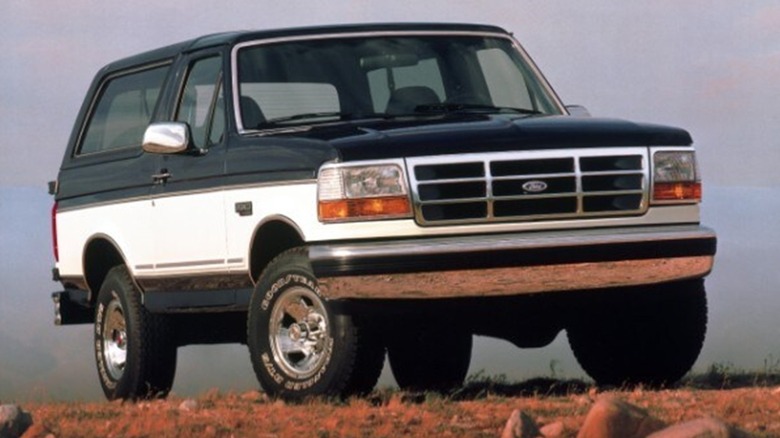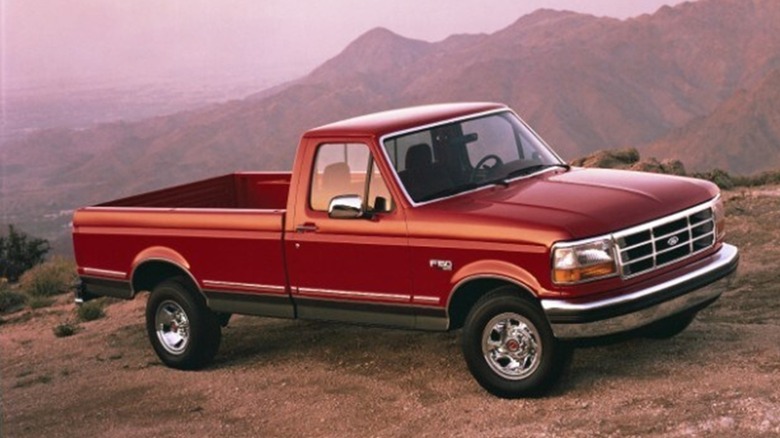What Are Ford Aeronose Trucks And Which Years Were They Made?
Pickup truck lovers often come up with clever nicknames for their favorite generations or body styles. Square body Chevy trucks are a popular example, but Ford enthusiasts are known to get in on the fun as well. While terms like Bullnose and Bricknose describe Ford F-Series pickup trucks and full-size Broncos from 1980 through 1991, a 1992 redesign featuring slightly improved aerodynamics brought forth the era of the Aeronose Ford trucks.
Like other descriptive monikers, you won't find Aeronose in any of Ford's official advertising from that time. And, outside of circles containing those who appreciate old body style (OBS) trucks, it's often hard to find anyone who knows the differences between the various Ford truck noses.
The Aeronose body style spanned the Ford F-Series' ninth generation (1992-1997) and fifth generation of the full-size Ford Bronco, which started in 1992 and continued on through 1996, the Bronco's final model year before its 25-year hiatus. In all, the design changes were subtle, but they paved the way for the next generation of aerodynamic Ford F-Series pickup trucks.
What sets Ford Aeronose trucks apart from other generations?
Before the Aeronose Ford trucks came to be, the eighth-generation F-Series trucks and fourth-generation full-size Broncos were the new style carrying the Bricknose nickname from the 1987 through 1991 model years. Before the Bricknose design, Bullnose Ford trucks ruled the roost from 1980 through 1986.
The easiest way to tell these three generations apart is to count the number of rectangular openings in the grille. Bullnose Fords had four rows and six columns for a total of 24 rectangles, while Bricknose models had one less row and two fewer columns for a total of 12 rectangles. The Aeronose Ford deleted a column to leave nine rectangles with the center column of three rectangles being longer than the columns of three on either side. You'll also see subtle differences in the newer style wrap-around headlight and turn signal assembly.
Ford introduced the all-new 10th-generation F-Series in 1997 with an aerodynamically improved front fascia and moved away from the rectangular box grille that had identified Ford trucks for the last few generations. The new F-150 softened a bit to make it more appealing to the general public while the F-Series Super Duty trucks targeted customers demanding more utility from their trucks.

